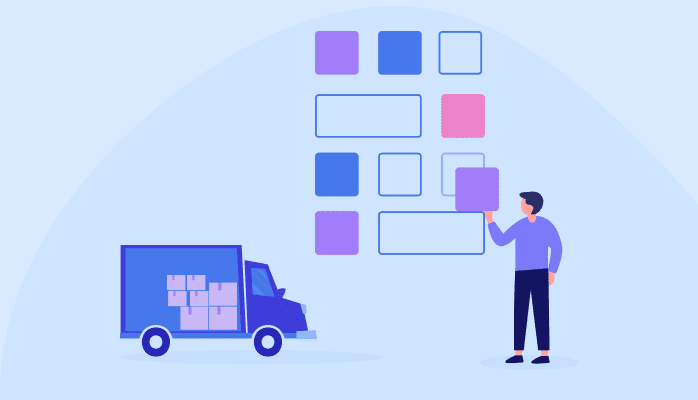Transportation management systems, also called freight forwarding software, help you to move goods with minimal time and material use. TMS needs to be reliable & quick. It’s vital to have a well-designed, streamlined process for your business. This goal’s success will depend on a clear separation between different responsibilities. Executing this task with manual labor might be challenging, and exploring the various available tools makes sense.
In the logistics industry, the amount of goods transported is often limited by the vehicle. In such a system, you would have a team of people who look into the details of a vehicle and decide what type and how many products that vehicle can carry for any specific route of travel.
Companies must ensure their efficient distribution process as we evolve and become faster-paced. One great way to do that is by implementing a next-generation software platform that offers shipping process tracking and optimization and prepares you for future digitization needs.
Top 6 challenges of Transportation Management System
Uncertain Future Digitization
As we scale, logistics and supply chain businesses would only have a limited time to build up their digital capabilities. As a result, the future of these industries will be dictated by who is most successful at applying analytics to create automated decision-making.
Legacy TMS solutions are not as flexible and cannot cope with the ever-increasing available services and customer experience desired. In addition, these rigid solutions often have many limitations, making it difficult for organizations to adopt new technologies or features.
Real-time shipments
Tracking shipments in a traditional system can take up a lot of time and resources. However, you can make better decisions by tracking the same parcels with geographical data.
Data is the key to understanding our world and can be collected globally. It is estimated that 90% of the world’s data has been created in the last two years. We can make smarter decisions and uncover new opportunities with more data available.
Routing Efficiency
The distribution of freight is vital to the success of a company. However, when routes are not managed efficiently, distribution logistics become inefficient, and drivers will spend more time driving. It can also lead to engine idling, which increases maintenance costs.
Increased Transportation costs
Manual allocation of orders can be a logistical nightmare. Therefore, you need an effective and time-sensitive method to allocate orders. Using the right technology or platform will allow you to assign orders in a time-sensitive and effective manner. It will also allow you to manage customer queries, keep track of all your inventory, and monitor the most recent trends in your industry.
It also typically involves long driving times and the possibility of being delayed, meaning you could have to wait for your order before it arrives at your delivery location.
Performance delivery measure
Unable to deliver orders on time is a common delivery problem impacting the customer experience, leading to poor reviews and a decreased customer base.
Delivery problems can result from many factors, such as poor weather, traffic, or human error. However, the most common delivery problem has been how quickly an order is delivered. Customers expect their orders to be delivered on time, and when they don’t get them promptly, this affects their overall experience and can lead to a decrease in customers.
Cross-functional collaboration
Modern supply chains are a complicated web of suppliers, manufacturers, and stores. For the system to operate smoothly, everyone in the chain must be able to communicate with each other. Unfortunately, TMS does not offer the capability to interact with all the disconnected dots in a single place.
Multi-modal transportation coverage
The transportation industry is one of the most complex as it involves many modes. TMS coverage has been traditionally limited to surface-based modes such as trucks and bikes. However, in recent years there has been an increased interest in multi-modal transportation coverage, which includes all the different modes of transportation, including air, rail, water, and space.
Multi-modal transportation is the future; there are many options on the table for people looking to be more environmentally friendly. With increasing urbanization and the ever-increasing customer demands, our transport system must continue to evolve to meet these needs.
Tide over TMS challenges with Low-code supply chain visibility platform
As society changes and the rate of instant deliveries becomes common, companies must ensure their efficient delivery management system. One method can ensure that every step of a shipping process is optimized. It does this by tracking inventory data and routing shipments efficiently throughout the supply chain.
On the surface, transportation seems like a simple process. But behind the scenes, many moving parts need to work together to keep an operation running smoothly. With all this responsibility on your shoulders, it’s essential to have a reliable partner who can help you reduce costs, increase efficiency and maintain your competitive edge.
A low-code supply chain visibility platform enables suppliers, transportation, and distribution businesses to simplify their processes. Settyl platform provides them with a clear overview of the process through the pre-shipment, in-transit, and post-shipment phases of the supply chain cycle to enable sustainable shipping.
